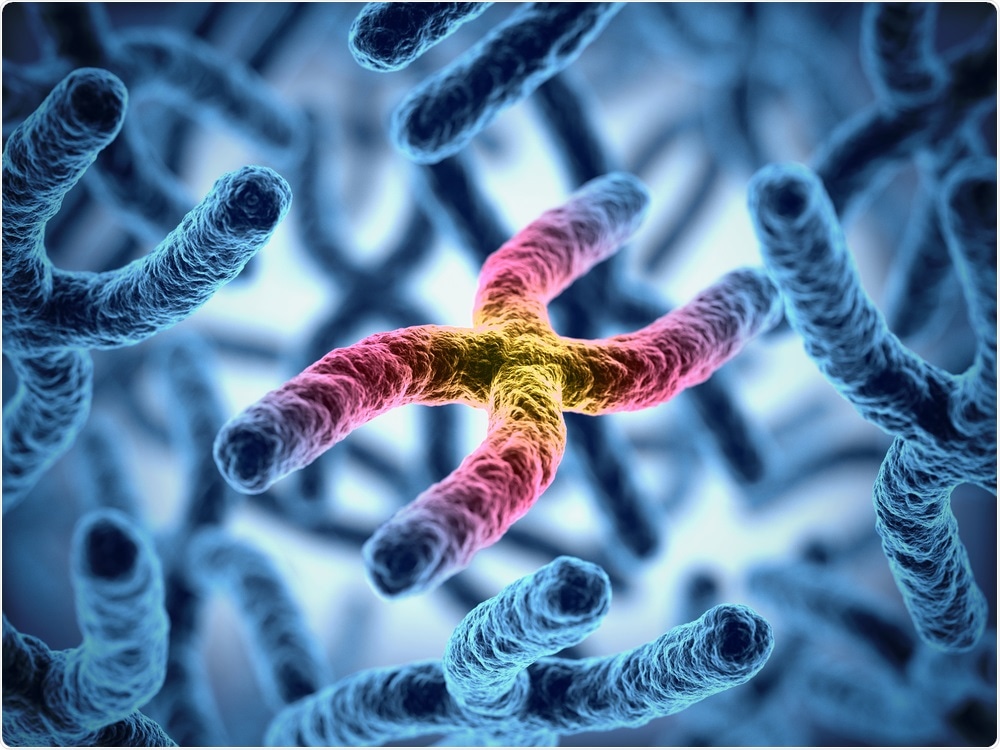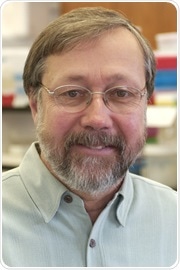In this interview, AZoLifeSciences speaks to Dr. Terry Hasssold about his latest research into oocytes and how imperfect egg cells are more common than scientists initially thought.
What provoked your research into human oocytes?
The normal number of chromosomes in humans is 46, but we know from studies of pre-implantation embryos and miscarriages that a surprisingly large proportion of fertilized eggs – at least 25% and possibly as many as 50% -- have the “wrong” number, typically 45 (monosomy) or 47 (trisomy).
These “aneuploid” embryos almost always result in miscarriage or congenital birth defects. Because most aneuploidy involves an error in the egg, not the sperm, we have been focusing on the mechanics of oogenesis.
.jpg)
Female human egg cell. Image Credit: Kateryna Kon/Shutterstock.com
What is aneuploidy and what is the leading cause of this?
Aneuploids typically have one too few (monosomy) or one too many (trisomy; e.g., trisomy 21, the cause of Down syndrome) chromosomes. They typically result from errors in chromosome division in meiosis, the process by which eggs and sperm are generated.
Can you describe how you carried out your research into human egg cells?
We established a collaboration with researchers at UCSF, who provided us with ovarian tissue samples from elective abortions. Because meiotic recombination – the focus of our analysis – takes place in the fetal oocyte, fetal tissue is necessary to conduct this type of study.
What did you discover?
We found that over 7% of oocytes had homologous chromosomes that did not recombine with one another. Because failure to recombine dramatically increases the risk of aneuploidy, it appears that – right from the beginning of human egg development – a large proportion of oocytes are predestined to be aneuploid.
Why are chromosomes 21 and 22 most likely to exhibit recombination failure?
Most homologous chromosomes are held together by multiple exchanges (“cross-overs”).
However, chromosomes 21 and 22 are quite small, and typically are held together by only 1 or 2 cross-over; thus, if they lose their only cross-over, they become “exchangeless”.

Chromosomes. Image Credit: koya979/Shutterstock.com
Did you discover a relationship between gestational age and exchangeless chromosomes?
Bottom line…yes, for reasons that are unclear. This is something we plan to follow-up on.
How will your research help couples who have experienced a miscarriage?
There are a couple of ways. One is what I think of as a public service announcement, making the point that human reproduction (and especially oogenesis) is surprisingly error-prone, leading to a very high incidence of miscarriage in humans (i.e., probably 15% of all clinically recognized pregnancies).
For reasons that are still unclear, this error rate appears to be hard-wired into our species, so that the occurrence of a miscarriage does not mean that the couple did something wrong or did not do something that they should have, only that these kinds of errors will occur to all couples, given enough pregnancies.
Second, we identified a small subset of cases in which there was an extremely high level of recombination failure. If we can identify variants that are linked to these cases, we may be able to monitor these pregnancies more closely.

Woman holding a pregnancy test. Image Credit: Antonio Guillem/Shutterstock.com
Do you believe that with more research into this field you will be able to determine the reason for these chromosomal errors?
That is the great hope; this is obviously complicated by the need to acquire fetal tissues, which is prohibited in many countries.
What are the next steps in your research into oocytes?
As indicated above, we are hopeful that eventually variants linked to recombination failure can be identified.
About Dr. Terry Hassold
Dr. Hassold is an Eastlick Distinguished Professor in the School of Molecular Biosciences at Washington State University (WSU). Dr. Hassold has a long-standing interest in the biology of chromosome abnormalities in humans. Over 50% of all miscarriages are due to such abnormalities and, of those pregnancies that survive to term, they are the most important cause of congenital defects and mental retardation.
One of the primary aims of his laboratory is to use cytogenetic and molecular techniques to study the origin and etiology of these chromosome abnormalities. Ultimately, the goal is to uncover the basic mechanisms responsible for human chromosome abnormalities and to devise methods to reduce or eliminate, their occurrence.
He is recognized as one of the world’s leaders in this area, and serves or has served on several scientific advisory boards (e.g., the National Down Syndrome Society, Support Organization for Trisomy 18, 13 and Related Disorders) and NIH scientific review panels.
In addition, he serves or has served as an Editor or Editorial Board member of seven scientific journals (American Journal of Human Genetics, American Journal of Medical Genetics, Chromosoma, Cytogenetics and Genome Research, Down Syndrome Quarterly, Genetic Epidemiology, and Journal of Assisted Reproduction and Genetics). He has published over 200 scientific articles on meiosis or meiotic chromosome abnormalities in mice or humans and has edited three books